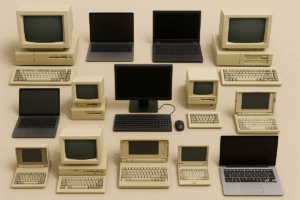The growth has been continuous for years. With the pandemic, e-commerce has conquered a new audience. And even though, after the end of lockdowns, we have returned to more controlled growth rates, online shopping has become part of the new everyday life.
The experience, however, continues to change: once futuristic technologies have become familiar, while new ones are being experimented with by the most innovative brands.
Table of Contents
The growth and change of e-commerce
It is not just a matter of choosing an item, putting it in the virtual shopping cart and buying it in a couple of clicks. The e-commerce experience is more composite.
The Internet is not just ‘a shop’ but a source of information. Four out of ten digital consumers browse before buying in a physical shop. But for some items, such as consumer electronics and sports equipment, the share rises to more than seven out of ten.
Confirming an increasingly mixed experience, the reverse path is also growing. One in four online purchases is concluded after having passed through a physical shop, to ask for information and advice.
The point of sale, therefore, remains important. But, it becomes part of a more complex and distributed system, facilitated by mobile.
By now, this is no longer news. The smartphone is also the primary hub for e-commerce. But, as always, the adoption of a tool is not a simple shift: it entails deeper changes.
Mobile, in particular, facilitates dialogue between online and offline platforms, opening up new shopping experiences. With the smartphone, it is possible not only to buy, but also to check in augmented reality how, for example, a new wardrobe fits in the home, or to test whether the size of a t-shirt is right.
The business response in the luxury sector
Let us take as an example the luxury sector which, after initial hesitations, has embraced digital channels with conviction. But, more than others, it needs to preside over all potential points of contact with users.
The growth of online shopping is solid. Traditional e-commerce, via third-party platforms or on its own site, has been joined by social commerce: you buy in a few clicks what you see in a post or video.
And then there is the Metaverse. Although the bright scenario hypothesised a couple of years ago has not yet materialised, several brands are exploring new solutions in anticipation of possible developments.
At the same time, however, Deloitte estimates that in 2025, 70% of global luxury fashion players’ revenues will come from offline channels. 68% of investors are convinced that new technologies such as IoT, robotics and blockchain should be targeted.
But the goal is not to create an exclusively digital experience. For the luxury world (and beyond), the goal is to develop Unified Commerce models, a unified commerce in which the barriers between analogue and digital blur.
Read also: Bedrock, what is Amazon up to with artificial intelligence?












